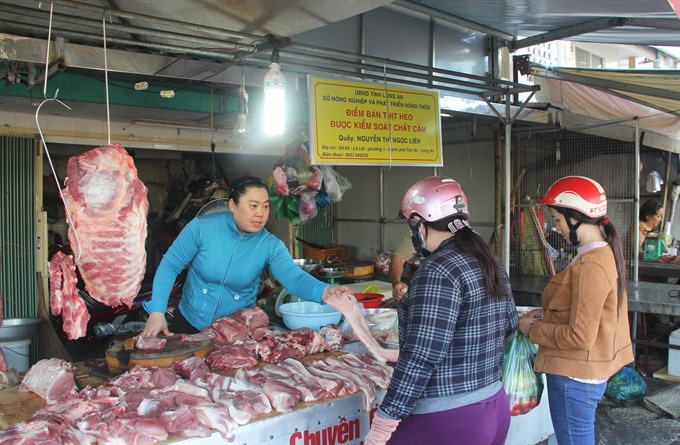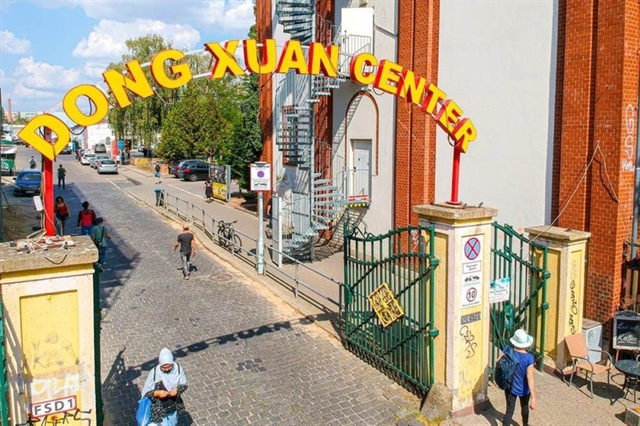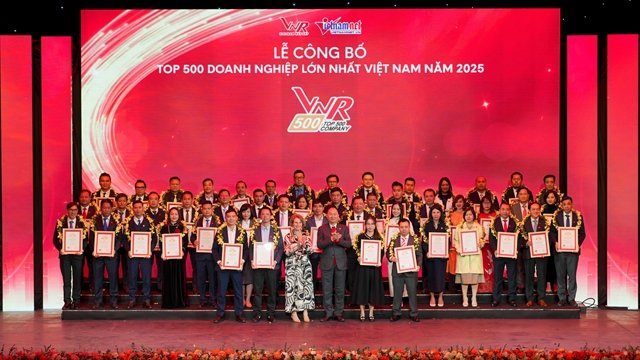 Society
Society

While chilled meat has grown in popularity among consumers in developed markets, Vietnamese consumers still hesitate to add it to their shopping carts.
 |
| Customers look to buy meat at a traditional meat vendor. Vietnamese consumers are reluctant to pick up chilled meat due to lack of information. — VNA/VNS Photo Bùi Như Trường Giang |
HÀ NỘI — While chilled meat has grown in popularity among consumers in developed markets, Vietnamese consumers still hesitate to add it to their shopping carts.
Small surveys conducted at traditional markets show an astonishing lack of awareness regarding chilled meat, with most shoppers unable to tell the difference between chilled meat and frozen meat. Worse still, many of them remained convinced that they were not fresh and therefore were frozen to hide the bad taste.
Chilled meat is meat preserved by chilling to and maintaining at no more than 7oC, 3oC for offal, immediately after Slaughter. It is not only considered safer to consume but also offers a fresher taste due to a process called ageing, which allows the meat to age in its own juice refrigerated near zero temperature (wet ageing).
Even those who occasionally pick up chilled meat from supermarket shelves only did so because it was convenient and possibly safer to consume than meat offered at traditional markets.
“Việt Nam, with its hot and humid weather, is the perfect condition for the growth of microorganisms, many of which make the meat turn bad faster on top of the enzymes found in meat,” said Trần Thị Mai Phương, a researcher from the Vietnam Livestock Association.
“Raw meat found in traditional markets is not necessarily contaminated if it was processed in accordance with safety standards but it cannot produce that fresh taste without the process of meat ageing. As a matter of fact, Việt Nam is among a handful of countries where consumers still have a habit of buying raw meat.”
Phương, however, said consumers are not to blame.
“There is an urgent need to raise awareness and provide Vietnamese consumers with information to help change their shopping habits. There is an important part for national standards on chilled meat to play, which is expected to be implemented in 2018,” she said.
There have been positive signs that the market is warming up to adopt chilled meat as a mainstream product. Hà Nội was one of the country’s trendsetters in establishing a number of brands that supply the market with chilled and frozen meat products such as Bảo Châu Pork, Xuka, Lan Vinh and Harpo since 2016.
Breaking into the market and changing consumers’ habits, however, has proven to be challenging. To make matters worse, domestic brands often have to fend off fierce competition from imported products. A quick browse through a number of the capital city’s supermarkets showed that domestic products were priced higher than their imported direct competition. Notably, imported frozen chicken legs were priced at VNĐ35,000 (US$1.5) while domestic products were priced at nearly $3.
Lại Mạnh Toàn, department head of food processing and preservation under the National Institute of Animal Sciences said the national standard for chilled meat is imperative should the country hope to export meat products.
Toàn said he believed such standards would also greatly improve quality and safety standards for the domestic meat market. — VNS




